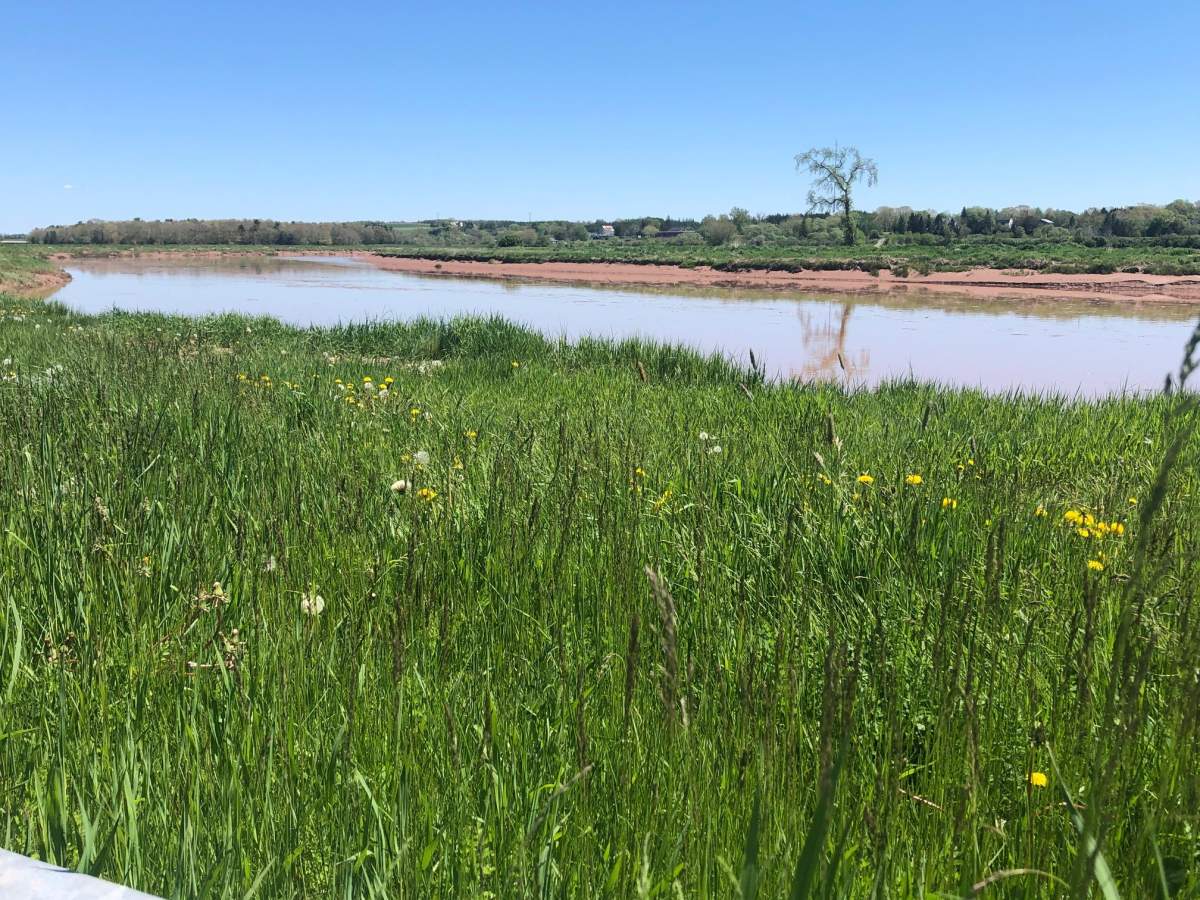The fisheries guardian for the Sipekneꞌkatik First Nation has known for a while now that something needed to be done to help protect the Shubenacadie River.

“It was about two or three years ago, there was a fish kill over in Shubenacadie,” says Matt Maloney.
“We seen lots of gaspereau, there was lots of bass going down. And I contacted DFO and they told me it was like a perfect storm; it was a heat wave at the time, and I think it was full moon tides might’ve affected it and then farm run-off.”
After that, he looked into the issue further and realized a tree buffer was needed around the river. That plan — to plant trees around the river to help address climate change — was part of Wednesday’s announcement.
“That’ll help mitigate the flooding, the run-off from the farms and eventually will produce some shade,” Maloney says.
The location of the announcement holds significance. It’s the site of the former Shubenacadie Indian Residential School and the river was a gathering place for people travelling around the region, says Cheryl Maloney, Sipekne’katik’s governance initiative lead.

Get daily National news
And the Mi’kmaq want to protect both the land and the river.
“I think it’s just a natural next step move for the Mi’kmaq to not just take our roles of being able to use the resources, but to protect the resources,” she says.
Tree planting will begin by September, but community engagement is expected to happen first.
“Part of the work plan is to engage the local homeowners and the farmers in the community,” she says.
Before the tree planting is a river cleanup, Matt Maloney says, beginning at the start of June.
“We’re going to clean the river from Lock 5 in Grand Lake all the way to the campground in Shubenacadie, and then we’re going to jump to Stewiacke where there’s a lot of fishing,” he says. “People bass-fish there so it’s a high-garbage area.”
Kody Blois, MP for Kings–Hants, announced $170,000 from Ottawa’s Nature Smart Climate Solutions Fund.
“You look right here along this riverbed, this used to be parallel with river at one time,” he explained. “Had there been more of a forested area, perhaps the roots and the biodiversity would’ve protected against erosion.”





Comments